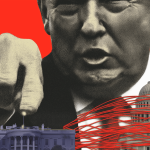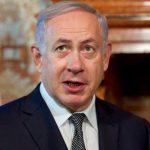Last October, Hong Kong’s highest-ranking financial minister trooped to Riyadh, Saudi Arabia’s capital city and the home of the Tadawul, its stock exchange. Surrounded by Saudi officials, Paul Chan pressed a button to launch the Middle East’s largest exchange-traded fund. The new ETF has $1.2 billion in assets under management, tracking 30 sharia-compliant companies that trade in the Chinese city. (One company that was excluded? Megabank HSBC, for charging interest.)
Chan and several of his peers, including Hong Kong Exchanges and Clearing CEO Bonnie Chan (no relation), are now regular visitors to the Middle East as the Chinese city tries to build ties with new sources of capital in the Gulf.
“The Hong Kong–Dubai Cathay Pacific flight has just been packed the last three to four years,” says Frederic Neumann, chief Asia economist at HSBC (who notes that he, too, has been “traveling to the Middle East much more”).
Hong Kong is just one Asian economy trying to court Gulf money—and not just from retail investors. Middle Eastern sovereign wealth funds, whether it’s Saudi Arabia’s trillion-dollar Public Investment Fund (PIF) or the UAE’s array of institutions, are shifting their focus to the East. Investors in the Gulf are looking to diversify their investments—and Asia, with its young populations, vibrant tech sectors, and fast-growing economies, offers the most exciting opportunities.
“Gulf countries need to find new markets, and the new markets which are most compelling are in Asia,” explains Vasuki Shastry, a Dubai-based senior advisor at geopolitical risk firm Gatehouse Advisory Partners. “If they can partner with other investment funds, can they find the next Jack Ma, the next diamond in the rough?”
Yet these closer financial ties are more than just a commercial exercise. They are strategic, as the Middle East tries to build a post-oil economy. And they’re geopolitical, as both the Gulf and Asia seek to hedge their bets as the U.S. flexes its economic muscle and the new Trump administration threatens to shake up trade and investment relationships.
The Middle East’s governments originally took (and still take) a more Eurocentric approach to money management. Countries like Saudi Arabia, Kuwait, and the United Arab Emirates funneled their oil revenues toward public markets in developed economies in North America and Europe. Abu Dhabi’s Mubadala Investment Co., for example, allots just under half of its overseas investments to the U.S., far ahead of any other jurisdiction, per data from think tank Asia House. Just 2% is in China.
That means investors in Saudi Arabia, the UAE, and others in the Gulf Cooperation Council (GCC) “missed the boat a little bit in Asia’s rise,” says Neumann. Now the Middle East is trying to catch up.
Gulf investors are also looking to add other options to their portfolios, at a time when Western governments are stepping up scrutiny of overseas investments. Last year, the U.K. blocked a UAE backed effort to take over the Telegraph newspaper, and European governments grumbled over Gulf entities trying to expand their stake in local telcos.
“It’s not an easy proposition that they can simply go out and buy a Western asset,” Shastry says. “The Gulf countries are uncomfortable with the level of scrutiny that comes with those kinds of investments.”
That’s pushing the Gulf to look at other markets, particularly Asia. “Middle Eastern sovereign wealth funds have continued quite an aggressive investment strategy” in the region, says Ana Nacvalovaite, a sovereign wealth funds expert at the University of Oxford.
Gulf investments in Asia are small, but growing. According to Global SWF, which tracks sovereign investments, the PIF invested $6.6 billion in Asian economies between 2022 and 2024, twice as much as what it invested in the region for the three years prior. Other GCC funds—like the Abu Dhabi Investment Authority, the Mubadala Investment Co., and the Qatar Investment Authority—also grew their Asia investments over the same period.
Still, Gulf investors are looking for more than a return on investment when it comes to Asia. HSBC’s Neumann suggests that Middle Eastern funds are “trying to get access to technology and know-how” that can help their own domestic economies.
Gulf investors, particularly from the UAE, have traditionally looked to India, banking on the region’s long trading and business ties with the South Asian economy. “Obviously, the UAE is home to any number of Indian billionaires. There’s familiarity there,” says Shastry. “India is almost like investing at home.”
Then there’s China, a major buyer of Middle Eastern oil. GCC investment in China is more “targeted” than its investment elsewhere, even in Asia, Neumann says: “You invest in China because there’s a geostrategic diversification imperative and an access to technology imperative.”
Middle East investors are “looking for big opportunities in key areas”—and in Asia, that’s technology, says Nacvalovaite. Take EVs: In late 2023, CYVN Holdings, an Abu Dhabi–linked company focused on mobility, invested $2.2 billion in Chinese EV startup Nio.
Video gaming is another up-and-coming sector winning Middle Eastern attention. The PIF’s many gaming investments include stakes in game developers Nintendo, Capcom, and Nexon, as well as China-based e-sports company Hero Esports.
Hicham Chahine, founder of e-sports company NIP Group, soon to be based in Abu Dhabi, says the Gulf’s interest in this sector helps investors tap a booming market: “China is the largest gaming market in the world. Look at the potential of India, Southeast Asia, Japan, and Korea. The East has always been more advanced in gaming and e-sports than the West.”
Finally, there’s Southeast Asia, particularly the Muslim-majority countries of Malaysia and Indonesia, which hope to bank on shared cultural and religious ties. “The Indonesians and Malaysians are placing a great deal of emphasis on cultural similarity,” Shastry explains.
Here, Gulf investors are putting money toward real estate, data centers, raw materials, and infrastructure. Indonesia recently won a $10 billion pledge from the UAE for a new renewable-energy joint venture, backed by Indonesia’s new Danantara sovereign wealth fund.
Pandu Sjahrir, chief investment officer of Danantara, notes that Abu Dhabi investors have been “in very close contact” as the fund was established. He’s bullish on Indonesia getting more investment from the Gulf. “They see Indonesia has great wealth in resources, cheap energy, an abundant population, especially from the consumer side,” Pandu says. “They’ve made money the last eight to 10 years with Indonesia. They want to do more.”
Asian Financial centers are also trying to attract more Middle Eastern investment. Hong Kong and Singapore—both hubs for wealth and family offices—are trying to encourage wealthy people from the Gulf to put money in their cities.
Hong Kong is particularly keen on this. In 2023, city officials made a bold—and, so far, unsuccessful—bid to have oil giant Saudi Aramco conduct a secondary listing there. HKEX, meanwhile, opened an office in Riyadh. Hong Kong also hosts the Capital Markets Forum, a conference organized by the Saudi Tadawul.
Neumann, from HSBC, admits it’s still “too early to tell” whether Hong Kong’s courting of Middle Eastern money is working. But the city’s tight links to China—important as a source of technology, buyer of oil, and potential security partner—could give it a leg up in attracting financial flows. “Money does follow the political realities of the day,” he says.
Asian countries and companies are also looking to invest in the Gulf, as Saudi Arabia and the UAE strive to invest domestically and internationally. An array of large Chinese companies are choosing to expand into the Middle East. Meituan, the Chinese food delivery giant, launched services in Saudi Arabia last year, its first venture outside Chinese territory.
“It’s the most lucrative market for Chinese companies,” Shastry says, particularly as developed markets like the U.S. and Europe slap tariffs on Chinese goods. Dubai, he adds, “is completely filled with Chinese-made cars.” According to research firm Canalys, three Chinese mobilephone brands—Transsion, Xiaomi, and Honor—held 37% of the Middle Eastern market (that includes Saudi Arabia and other Gulf nations, along with Iraq, Lebanon, Jordan, and Israel), outweighing Apple’s or Samsung’s market share.
And Chinese companies looking for new markets may get a helping hand from Gulf governments. Funds like the PIF are eager to invest in their own domestic economies and are leveraging money to win new domestic offices and manufacturing hubs. In early January, PC manufacturer Lenovo won a $2 billion investment from Alat, a PIF-linked company, leading to a new Middle East headquarters in Riyadh and a Saudi-based factory.
Even before the rise of U.S. President Donald Trump, Gulf countries were considering other options. Last year, Saudi Arabia and the UAE said they were thinking of joining the BRICS, the international bloc that’s increasingly positioned as a counterweight to the West. The UAE is now a full member.
Still, the Middle East’s security ties to the U.S. might make it difficult for the Gulf to have an unfettered financial relationship with China. In 2023, the U.S. grew increasingly concerned about G42, an Emirati AI company that boasted close relations with Chinese tech companies, including the U.S.-sanctioned Huawei. By the end of that year, G42 had agreed to cut ties with Chinese hardware suppliers, with CEO Peng Xiao admitting that the firm can’t “work with both sides.” A few months later, Microsoft swooped in with a $1.5 billion investment.
But the Gulf nations may decide that a more complicated world requires some investment flexibility. “The geopolitical realities are such that global investors are looking more at diversification today. And that’s true for Middle Eastern investors too,” Neumann, from HSBC, says.
And Pandu, from Danantara, is bullish that the Gulf will be convinced by what his country of Indonesia has to offer: “The Gulf missed out on India; they missed out on China. They don’t want to miss out on this one.”
This article appears in the April/May 2025: Asia issue of Fortune with the headline “Middle East money flows east.”
This story was originally featured on Fortune.com







